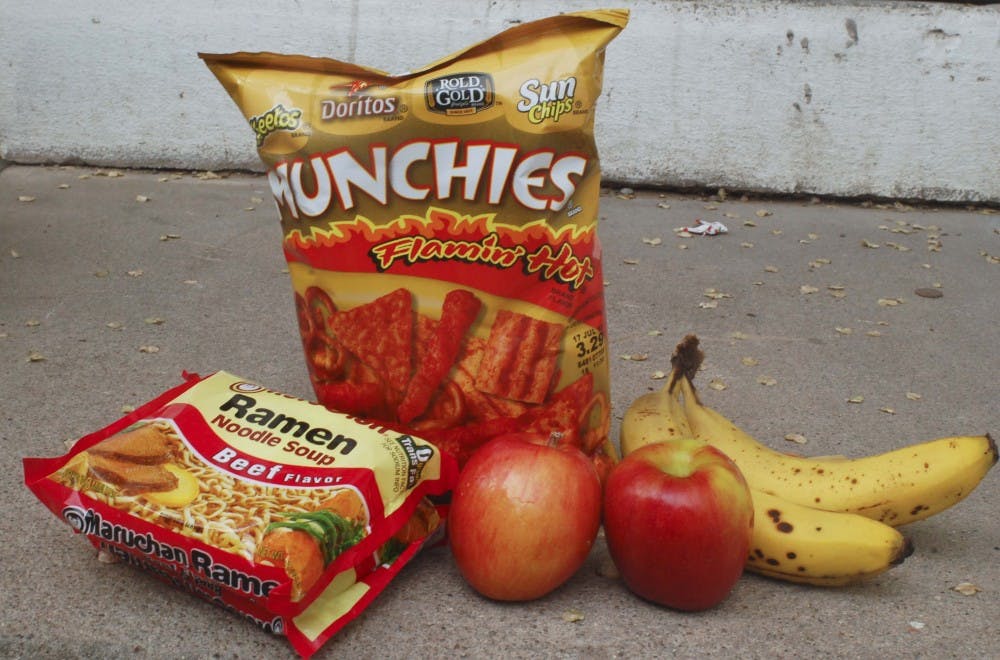While the prices of cheap foods such as ramen noodles and pop-tarts may be appealing for students who find themselves struggling financially, those who also want to be conscious of their health have a variety of different healthy meal options for a tight budget. The Daily Lobo sat down with UNM Dietitian Shelley Rael for advice on steps students can take for healthier and more affordable eating.
Step 1: Complement meals with fresh foods
Rael said the first step to eating healthier requires balancing out meals with fresh fruits and vegetables.
“It is easy to load up on starches and carbs, and complementing them with fresh foods is not only healthy, but also very cheap and easy,” she said.
Rael recommended buying fresh foods but, for students who need a cheaper option, buying canned food will also work. She said even complementing your meal with fruit juice is better than nothing, but it should be 100 percent fruit juice, and should contain no added sugar.
Step 2: Make small changes
“I’m hopeful students will venture to the grocery store more often than they go to fast food joints, but if they are already fixed on the lifestyle of eating out, they can at least eat out at more healthy spots,” Rael said.
When approached by students and faculty at the Wellness Program, she asks people to work on making small changes in their eating habits including choosing healthier menu options or restaurants when eating out, rather than making large changes to their diets all at once.
Step 3: Buy in bulk
Rael said purchasing food in bulk is a good option for students wanting to save money.
“If students want to buy in bulk, the price per unit of food is cheaper, but they have to be sure that the food doesn’t go bad,” Rael said.
She said that the best kinds of food to buy in bulk include frozen chicken and other items that students can store for a long time.
Get content from The Daily Lobo delivered to your inbox
Step 4: Shop cooperatively
Considering that not all students have their own cars and are able to easily make trips to the grocery store, Rael recommended carpooling with other students in order to save money and time.
“If students can coordinate some sort of co-op with their friends, not only will it be cheaper for them, but it might be a more enjoyable experience for them as well,” she said.
Rael said eating with other people is also healthier because conversation slows down the rate of consumption, limiting the number of calories consumed.
Step 5: Healthy foods vs. organic foods
Although buying organic foods might be important for some students, Rael said buying healthy foods you can afford is better than paying a lot more for only a little more quality.
“Although eating organic foods might be better for you, it should not be a top priority for students who can’t afford them,” Rael said. “Students should not feel like they have to shop at Whole Foods or the Co-op if they want to eat healthy. Again, complementing your meals with fresh fruits and vegetables is the best option.”
While some people believe that taking supplements or multivitamins is a good option for staying healthy, Rael said she doesn’t usually recommend that students take them because of the cost.
“Rather than spending extra on these supplements, students should just focus more on eating the right foods,” she said.






